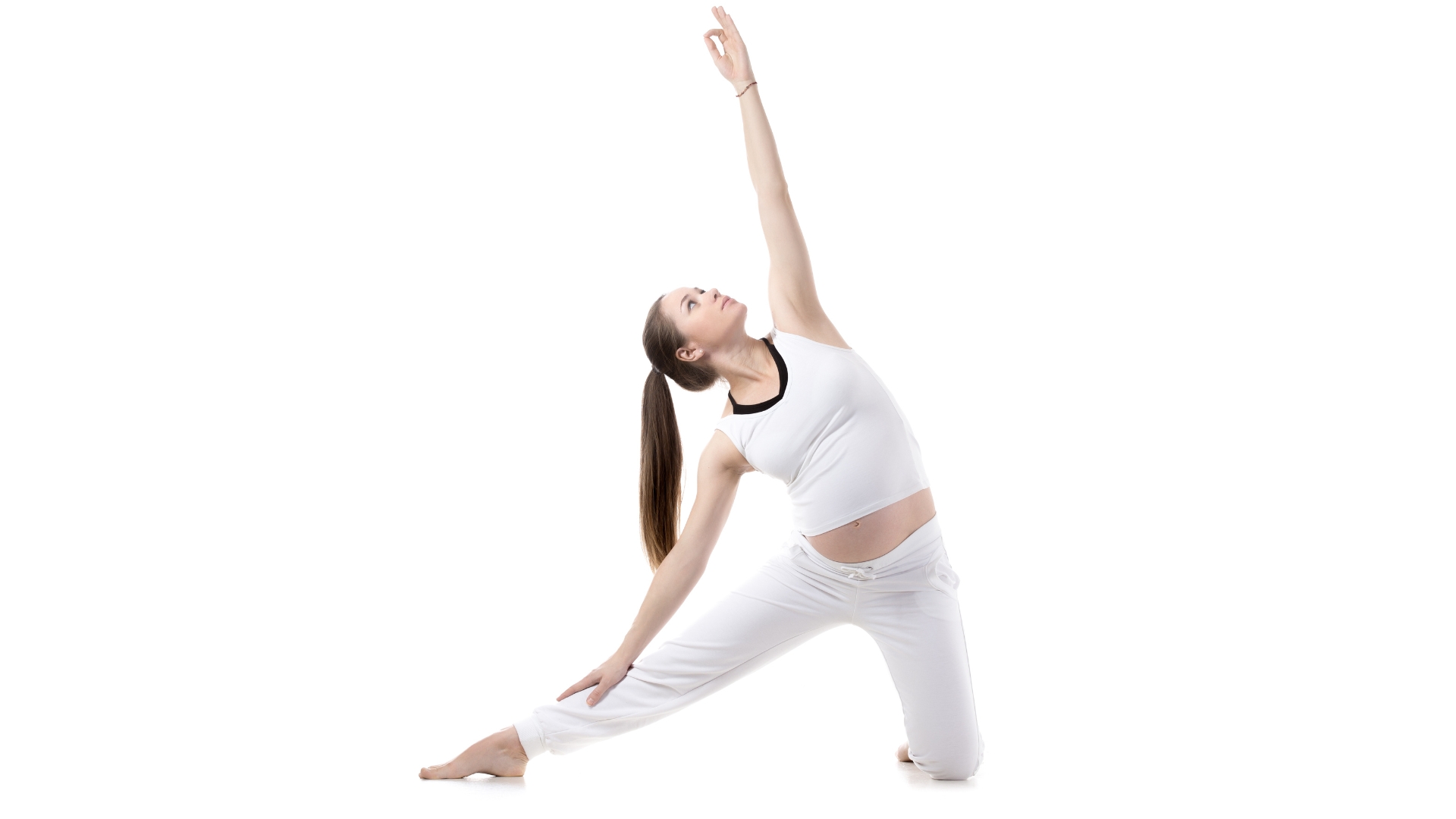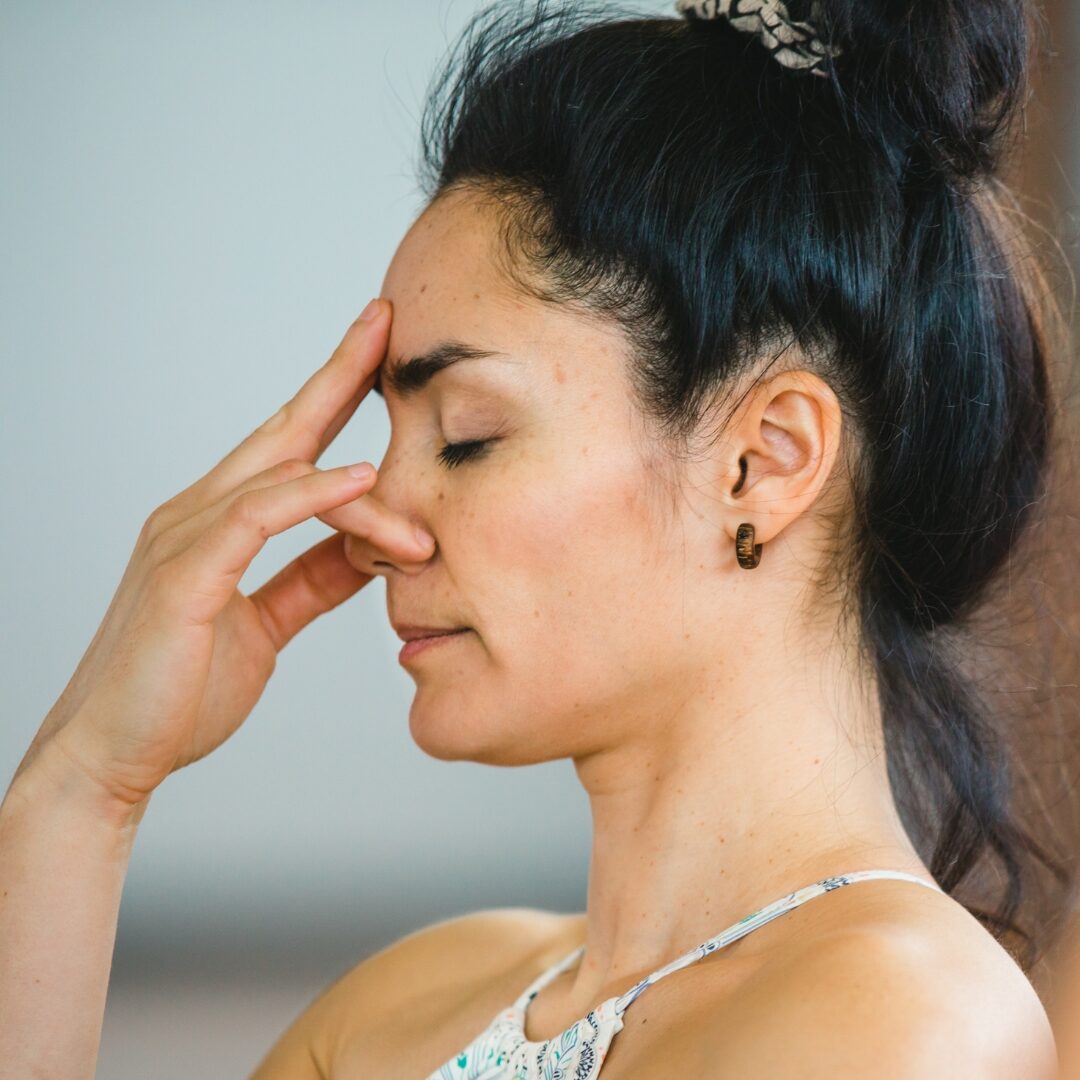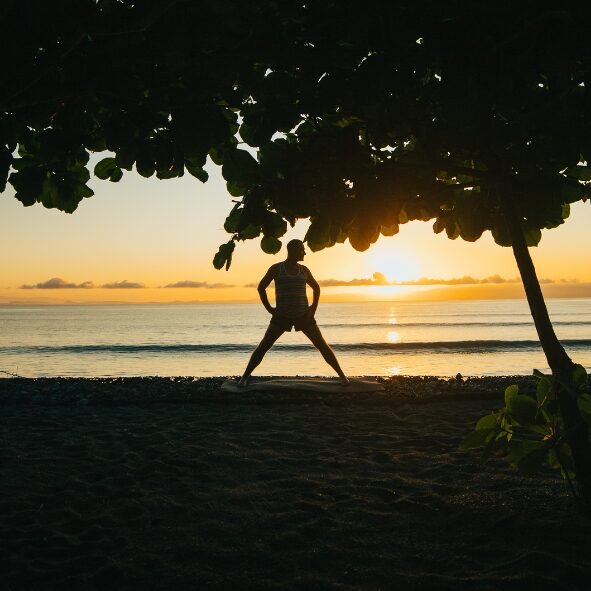Think about this for a moment. How aware are you of your front body? How often do you use it? You pretty much focus on your front body from the moment you wake up and walk to the bathroom mirror to brush your teeth to greeting people throughout your day, to eating, using your hands, walking forwards, using your core to sit and stand, etc. When we think of ourselves, we mostly identify with the front of the body.
But what about our side body?
Many of my students have told me that they experience their side body, the area from the hips up to the armpits as a place that feels numb, dense, or heavy. It’s an area of our body that gets very little attention. Nevertheless, our sidebody is an integral part of the physical body as a whole and needs to be tended to.
One beautiful benefit of yoga, “union,” is that it asks us to spread our interest and respect everywhere throughout our bodies. Yogi Aaron’s Applied Yoga Anatomy & Muscle Activation Technique, or AYAMA™, goes even deeper into this union which is an invaluable tool to learn and be able to teach true pain-free living.
Are you concerned with strengthening your core? Is shallow breathing an issue for you? What about scrunching your shoulders to your ears? If you said yes to any of the above, it’s time to give your side body some love.
Here we are going to keep our focus on the side body by teaching you about Parighasana or Gate Pose and how it can improve your breathing and more.
What Are The Benefits Of Gate Pose?
Gate Pose is an invigorating side bend, that allows us to stretch the side body, expand the intercostal muscles, and deepen the breath.
In Sanskrit, parigha means “the bar used for shutting a gate.” In Parighasana the body resembles that cross beam. The asana stretches the intercostal muscles that connect the ribs. When these muscles are tight, which commonly happens when we cough and sneeze repeatedly or have poor posture, the rib cage’s movement is restricted, and so is respiration. Elongating the intercostal muscles improves breathing; consequently, Parighasana helps respiratory problems usually associated with asthma, allergies, colds, and flu. Before we do this pose, though, let’s explore our breath with the three-part breath.
Gate Pose And Your Breath
Yogic breathing helps calm the nerves, cleanses the circulatory system, nourishes the abdominal organs, and improves digestion; it also helps us feel more grounded and relaxed in the body.
The three-part breath asks us to create a wave-like motion from the pelvis to the upper chest: inhaling into the belly, drawing the same breath up through the expanding rib cage, and still farther up into the chest.
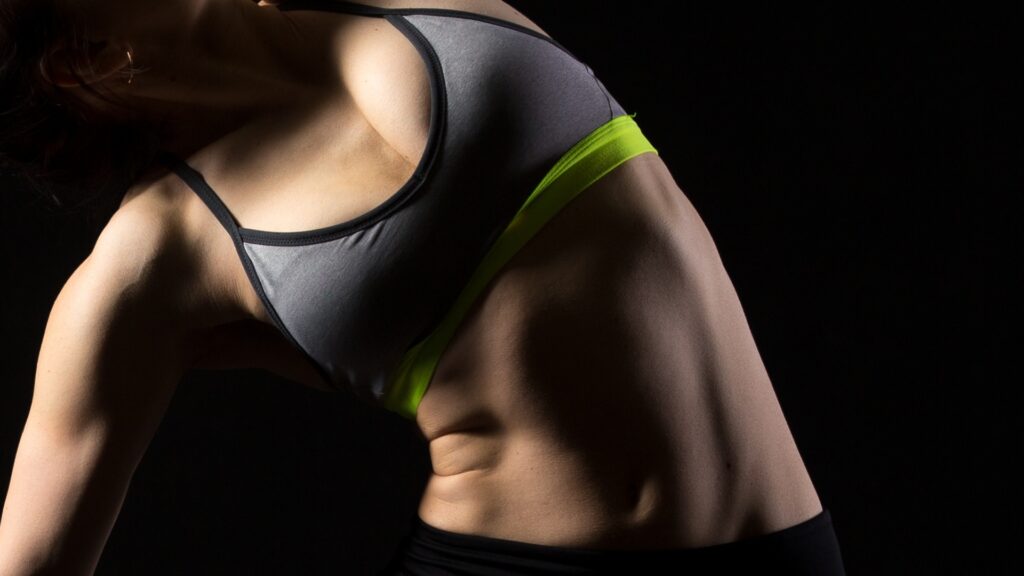
How To Do Three-Part Breathing
- Lie comfortably on your back with your knees bent.
- Place your hands on your belly (your middle fingers can touch the navel).
- Exhale completely, drawing the belly inward.
- Then inhale, letting the breath touch the front, sides, and back of your belly.
- When you’re ready, exhale completely.
- Next, place your palms on your rib cage so that your fingers no longer touch.
- Allow the ribs to gently widen as you inhale.
- Sense how you are opening the front, sides, and back of the ribs.
- As you exhale, you’ll feel the fingers move toward each other.
- Now, place one palm on the center of your upper chest, and breathe into that hand.
- Expand from your chest up to the collarbones.
- Exhale completely.
When you’re done practicing a few rounds, take a moment to notice any changes. Become aware of your side body. How well is the air broadening the ribs?
Now that you’ve prepped your side body with the three-part breath, let’s see how Parighasana can help widen your breath and awareness of the side body.
How To Practice Gate Pose
- Stand on your knees (if you are practicing on a hard floor, you might consider padding your knees with a mat or blanket).
- Stretch your right leg out to the right, with the heel of the foot on the floor and the toes stretching away from the body.
- Have the foot as flat on the floor as possible.
- Make sure the right leg is straight, with the knee facing the ceiling and the ankle in line with your right hip.
- Place the left knee directly below the left hip.
- Stretch both arms out to the sides, palms facing downward.
- In the front body, reach from your sternum through the chest muscles, lengthening along the biceps all the way into your thumbs.
- Be careful not to poke your rib cage forward.
- Feel the back body extend from the thoracic spine into the pinky toes.
- Inhale and feel some lightness in the side body; exhale and bend at the waist, dropping the right palm down to the lower right leg and stretching the left arm up, palm facing downward.
Each time you inhale, grow a little longer through the spine into the crown of your head, reaching into all the fingers of the left hand. With each exhalation gently deepen your side stretch, allowing the right hand to move down the right leg toward the ankle and the left palm to stretch away from the left hip.
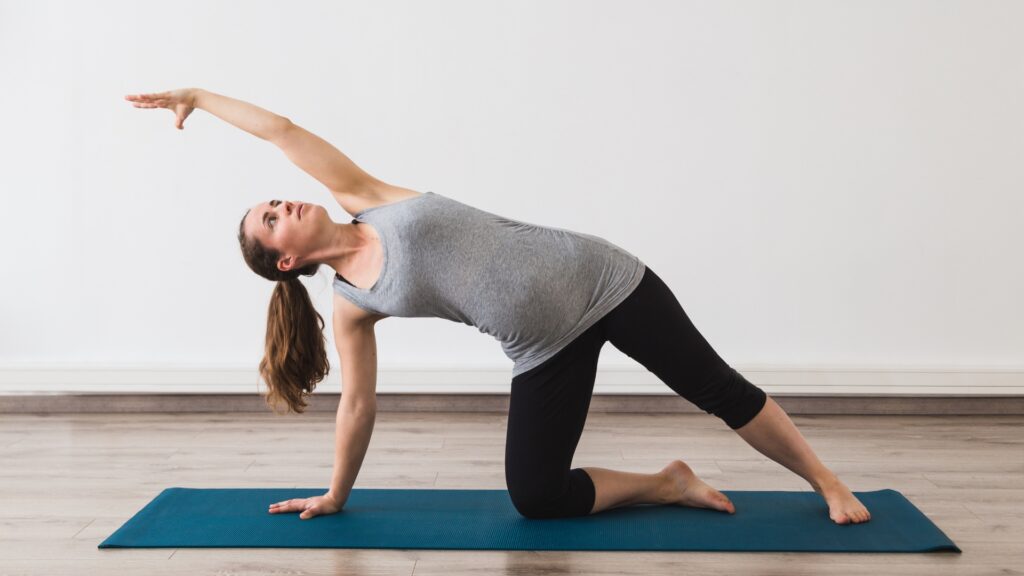
Twisting Gate Pose
Now that you are in the pose, you can refine it. One way to do this is to add a twist to your Gate Pose which will add in digestion and detoxification of your organs.
Instead of closing down the face and belly toward the floor, press your right thumb into the inner right leg to help you twist. Feel the right hip and the back right ribs move forward as the heart opens. Try not to have the left arm block your sight; rather stretch it past your ear and overhead. Breathe into the left rib cage, feeling the intercostal muscles expand. Know that you are also providing a nourishing stretch to the liver.
From Gate Pose To Side Plank
If you’re loving the benefits of Gate Pose and you’re ready to take your side stretching and strengthening to the next level, then you may want to give Side Plank a try.
From Gate Pose:
- Once your in a Gate Pose, make sure that the hand that is down on the ground is securely planted with the weight of your body dispersed in your fingers and throughout your hand, not in your wrists.
- Move the foot of your bent leg to meet your foot in your straight leg.
- Hold for three to five breaths.
- Place your knee back on the ground when finished or if the side plank becomes too difficult.
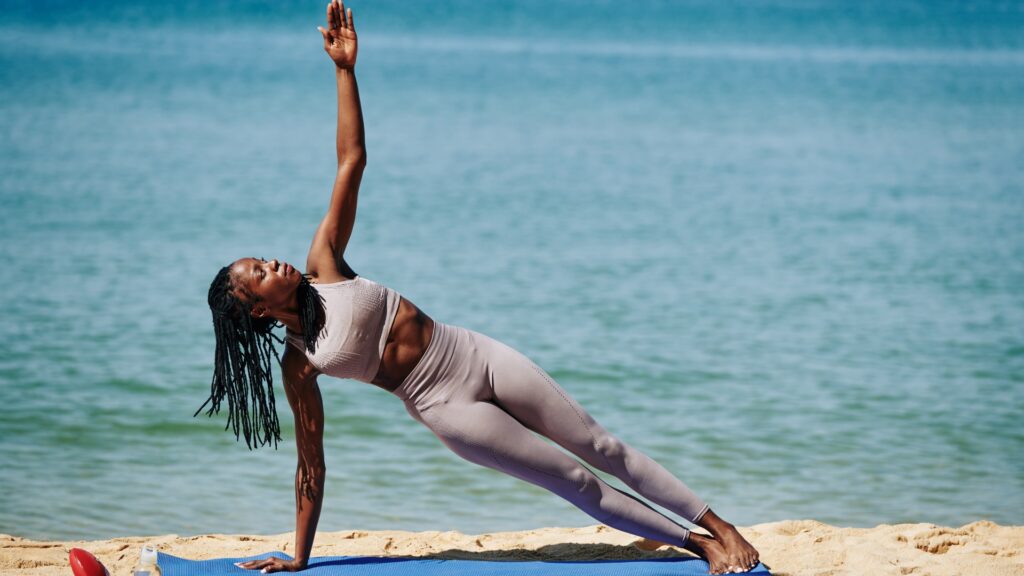
Coming Out of Gate Pose
Using your breath to move in and out of poses is a foundational part of yoga and coming out of Gate Pose is no exception. When you feel ready to come out of Parighasana:
- Use the inhalation to lift your left arm straight up toward the ceiling.
- Draw your spine back to vertical, and reach your two arms horizontally once again.
- With the next exhalation let the arms drop.
- When you do the pose on your second side, you will not only stretch the right side body and intercostals, you will also provide an opening to the stomach and spleen.
Side bending can feel very different from one side to the other, especially for people who have scoliosis. Ribs, muscles, and organs constricted from everyday posture will receive a welcome elongation in Gate Pose. Just be sure not to go deeper than you can comfortably breathe or move.
After doing the pose once or twice, sit on a folded blanket or bolster to take several three-part breaths. Have you awakened your side body? Can you feel how your intercostal muscles help to lift the ribs as you inhale and then draw the ribs down as you exhale?
The Gateway To Better Breathing
One definition for “gate” is “any means of access or entrance.” Practicing Gate Pose grants us access to improved breathing and a greater movement of prana, universal life-force energy, throughout the body. With the side body awakened our experience of wholeness and vitality increases.
Speaking of gateways, a yoga teacher training could be the gateway towards all of what you’ve been seeking: transformation, a change, improving health, deepening your yoga practice, connecting to yourself and other like-minded individuals, building a community and the positive list goes on and on. If you’ve been wondering if you’re ready for a yoga teacher training, perhaps this is the sign you’ve been looking for. Click below to learn more about how Blue Osa’s yoga teacher training immersions in Costa Rica, we’d be honored for you to join our community!


